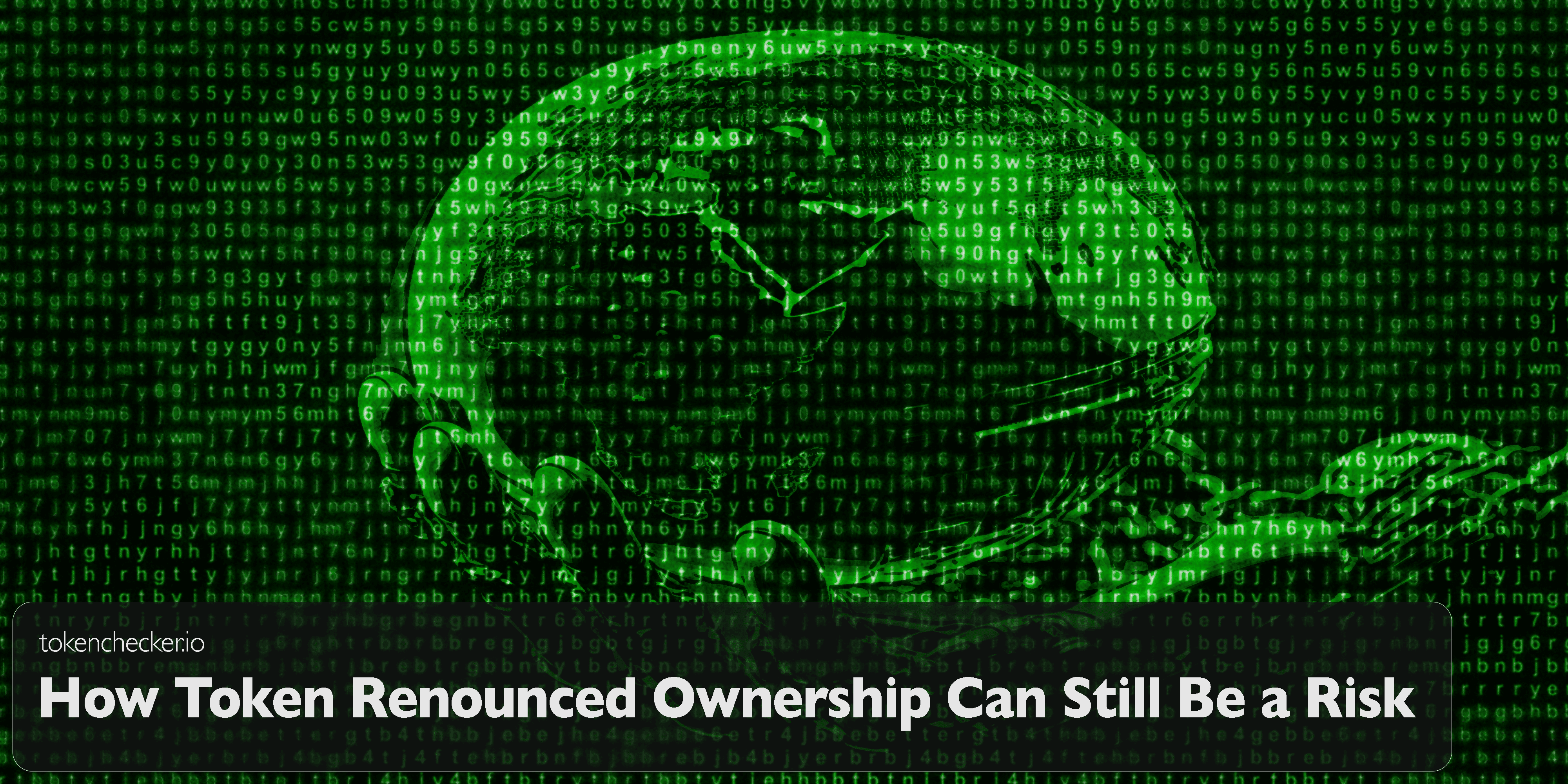
How Token Renounced Ownership Can Still Be a Risk
Introduction
Renounced ownership is often promoted as the ultimate safeguard in crypto, promising decentralization and security by permanently removing a developer's administrative control. Investors perceive renounced ownership as protection against rug pulls and contract manipulation. However, the reality is more complicated. Renunciation does not eliminate all risks; instead, it can sometimes create a false sense of security.
This article uncovers the hidden dangers that persist even after token ownership has been renounced and explains how tools like tokenchecker.io can help investors uncover these risks before they become costly.
What Renounced Ownership Really Means
Renouncing ownership means the deployer transfers administrative privileges of the smart contract to a dead or zero address, removing their ability to modify critical contract functions like minting, blacklisting, or changing taxes. While intended to demonstrate decentralization and transparency, this action alone doesn't guarantee safety.
Renounced ownership specifically prevents post-launch manipulations by the deployer but only for functions protected by "onlyOwner" modifiers. Other vulnerabilities or malicious code can still exist.
Hidden Risks in Renounced Ownership
1. Pre-Existing Malicious Functions
If malicious logic was embedded in the contract before ownership was renounced, that threat remains permanent and unchangeable. Examples include:
- Hidden minting functions without ownership restrictions.
- Self-destruct mechanisms allowing the contract to terminate and drain funds.
- Functions deceptively named to look harmless but allowing developers to withdraw funds.
tokenchecker.io’s Contract Analysis feature identifies suspicious functions and potential backdoors hidden within renounced contracts.
2. Persistent Smart Contract Vulnerabilities
Renouncing ownership does not fix inherent smart contract vulnerabilities. Issues like reentrancy attacks, integer overflow/underflow, and improper access controls remain exploitable if not patched before renunciation. These are some of the most dangerous functions a contract can have.
tokenchecker.io scans for known vulnerabilities in smart contracts, highlighting potential risks locked within the immutable code.
3. External Dependency Risks
Even a securely renounced token can be compromised if it relies on vulnerable external contracts or oracles. Risks include:
- Oracle manipulation leading to distorted price feeds.
- Cross-chain bridge vulnerabilities that expose tokens during transit.
These external dependencies remain a significant threat, irrespective of renounced ownership status.
4. Liquidity Manipulation Risks
Renounced ownership does not protect against liquidity manipulation unless liquidity provider (LP) tokens are explicitly locked or burned. Scammers can still withdraw liquidity or engage in pump-and-dump schemes even when ownership is renounced.
tokenchecker.io’s Liquidity Overview helps investors verify whether liquidity is genuinely locked, burned, or remains accessible to the project developers.
5. Misleading Tokenomics and Holder Distribution
A project may appear decentralized due to renounced ownership but still have centralized holder distributions. Large wallets or hidden allocations can crash token value instantly through massive dumps.
tokenchecker.io’s Holder Distribution feature provides a transparent view of token holders, identifying concentrated holdings that could indicate manipulation risks.
6. Social Engineering Exploits
Renounced ownership can be leveraged as a marketing tactic to build false investor confidence. Scammers exploit this perceived safety through:
- Fake project narratives promoting renounced status.
- Airdrop scams where interacting with tokens triggers wallet drains.
Investors must remain cautious, verifying project legitimacy beyond ownership status. tokenchecker.io’s Phishing Detection scans token-associated websites, reducing the risk of falling prey to deceptive marketing tactics.
Real-World Case: The False Security Trap
Many tokens that claimed renounced ownership eventually rugged investors through liquidity removal or hidden mint functions. These tokens exploited investor trust built around renunciation, emphasizing why a thorough, multi-layered verification approach is necessary.
How to Stay Protected
To protect yourself against the hidden risks associated with renounced ownership:
- Always use tokenchecker.io to perform in-depth smart contract analysis, identifying malicious functions and hidden minting capabilities.
- Verify liquidity lock status separately from renounced ownership claims.
- Examine holder distribution and tokenomics closely.
- Remain skeptical of aggressive marketing and claims of guaranteed safety due to ownership renunciation alone.
Final Thoughts
Renounced ownership is valuable, but it’s not a security panacea. Real investor safety demands comprehensive, layered due diligence that uncovers the nuances beyond surface-level claims.
Visit tokenchecker.io to thoroughly scan tokens for hidden risks and vulnerabilities even when ownership has been renounced.